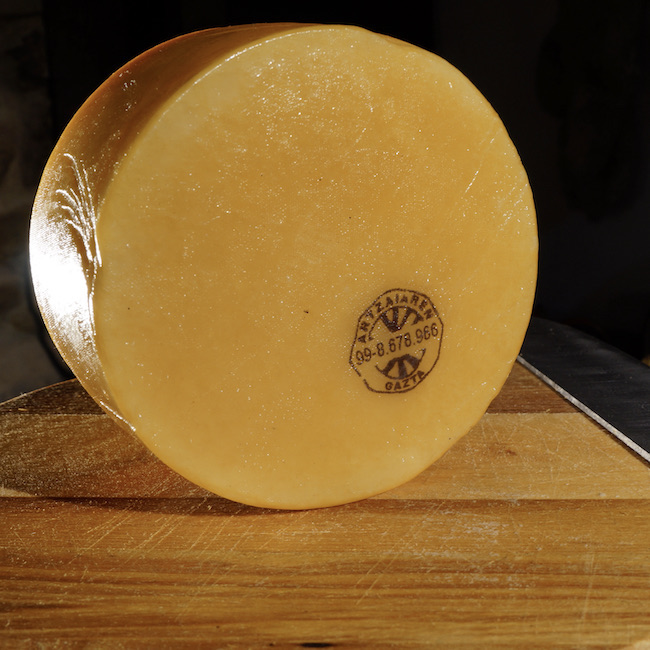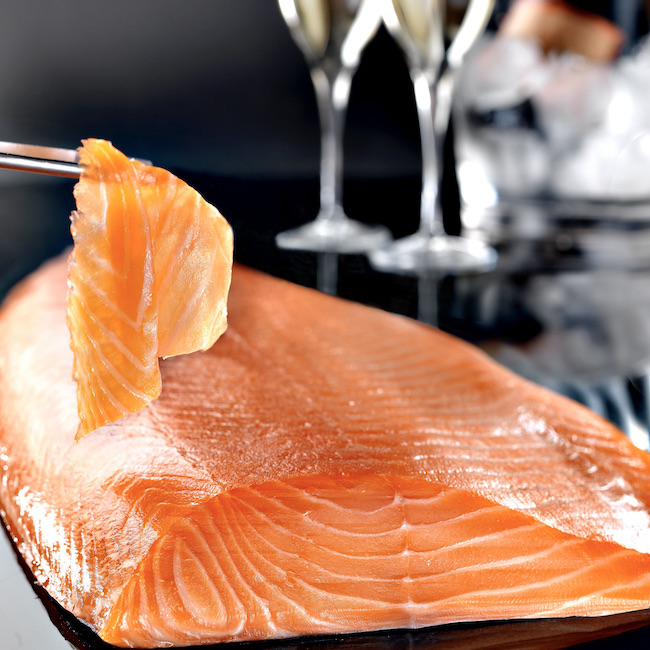.png.transform/rendition-xs/image_image%20(1).png)
Smoking, the Technique Giving Rise to Delicious Spanish Products
From pimentón to cecina, many foods are still prepared in this way to maintain their characteristic and traditional flavor.
Chance is an ally of inventiveness in the kitchen. Chance has led human beings to discover many ways of treating food, and of preserving it. An excellent example is smoking, a preservation technique which has been used since ancient times and which started to be used when some of our ancestors noticed that the foods that hung over the stoves where they were cooked—and which produced smoke, of course—lasted longer than others. The reason? The drying that occurred, as well as the effect of different components of the smoke.

Of course, we're talking about a time when the refrigerator did not exist. However, unlike those primitive stoves, smoking as a preservation technique has stood the test of time. What's more, there are Spanish products that can't really be understood without the special character that smoke imprints on them. "The answer as to why we continue to smoke is simple: it's a traditional way of 'cooking' that we're accustomed to, and it adds more umami to the food, undoubtedly," explains José Luis Nieto, from Cecinas Nieto, a company from León that makes cecina from the meat of cows and oxen. Smoked, of course. In this case, the process is carried out very subtly. In their smokehouses, there's not a trace of smoke: they use oak wood, which is burned in a boiler. The smoke circulates without stagnating for a week and a half, penetrating the cuts, and the result is a gastronomic treasure.
Also in northern Spain, smoking plays an essential role in the production of the famous Idiazábal cheese, made in the Basque Country and Navarre. "We have been smoking cheese for more than 200 years. In our case, smoking comes last. We use quality wood such as beech, cherry, apple... We cover the fire with a clump of nettles, just like my grandmother taught us. It allows us to drown the flame a bit, but I'm sure that it does more than that," says Eneko Goiburu, from the award-winning Quesería Ondarre from Segura (Guipúzcoa). In the case of Ondarre, smoking occurs after the cheeses have been cured for at least two months and the mold is removed. The cheeses are smoked for around 5 or 6 hours at a temperature that never exceeds 30 degrees. "In our case, smoking is a flavor enhancer that allows us to give subtle notes to the cheese, something special that differentiates it from the others. In the past it was done to hide a cheese's defects, but now we do it to give the cheese a special character."
Salmon, pimentón, and new players on the smoking scene
When smoking is part of the company's name, it's indubitably an important part of the brand's identity. Ahumados Domínguez has been producing some of the best smoked salmon in Europe for more than 60 years. "The founder, José Mestanza Domínguez, was a great fan of salmon and began smoking in an attic in Madrid, testing different approaches to do it as delicately as possible. In 1970, he set up his first factory in Alcorcón—a city just outside Madrid—and since then, the same formula has been maintained," explains Isabel Quesada, communications director at Ahumados Domínguez. That approach is a "secret" and is what has led them to have a product that, more than smoked, is "perfumed" due to the subtle and elegant formula. Given the quality of their product, Iceland Seafood acquired 80% of the company in 2021, which has boosted its exports to markets such as Italy and Portugal. This is further proof that Spain also produces smoked deli products that many associate with countries further north...

And, going further south, we come across what is perhaps the great smoked treasure of Spanish gastronomy: pimentón. Producers can be found in the region of La Vera (Extremadura). Pimentón is made from peppers dried with oak and holm oak wood. After being smoked, they're ground into an authentic red powder without which it is impossible to understand traditional recipes such as Galician-style pulpo and lentils with chorizo, for example. There are three varieties: sweet, sweet and sour, and spicy, and peeking into one of the drying sheds leaves quite the impression: these are spaces located on the company premises, and have a hearth where the firewood is burned. This technique has been used since the 17th century.
Almost five centuries later, we're in current-day Barcelona, where smoking has also become quite fashionable. In 2011, Carla Rodamilans and Buster Turner started smoking products at home. Today, more than a decade later, Rooftop Smokehouse is the face of 21st century smoking in Spain. Using an artisanal process, they make everything from butter to trout to pastrami in an industrial space they refurbished in the city, the former Lehmann factory. At the last edition of Madrid Fusión, their stand was one of the most visited by curious people interested in trying their products. "We created our brand because we believed that it made no sense to look for the best meat or fish if the smoking processes were industrial. It didn't seem logical to us," explains Rodamilans, who finds it "paradoxical" that this technique "that comes from the time of cavemen and women" is now in fashion. In any case, she believes that the process has evolved. "Smoking was used as a preservation technique, but today it's a process that shouldn't prevail over flavor. The key is that you have to be more tactful with smoking, using it carefully to achieve the best end product."
Author: Javier Sánchez/ @ICEX

